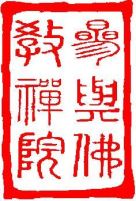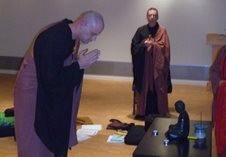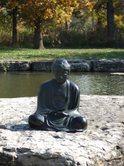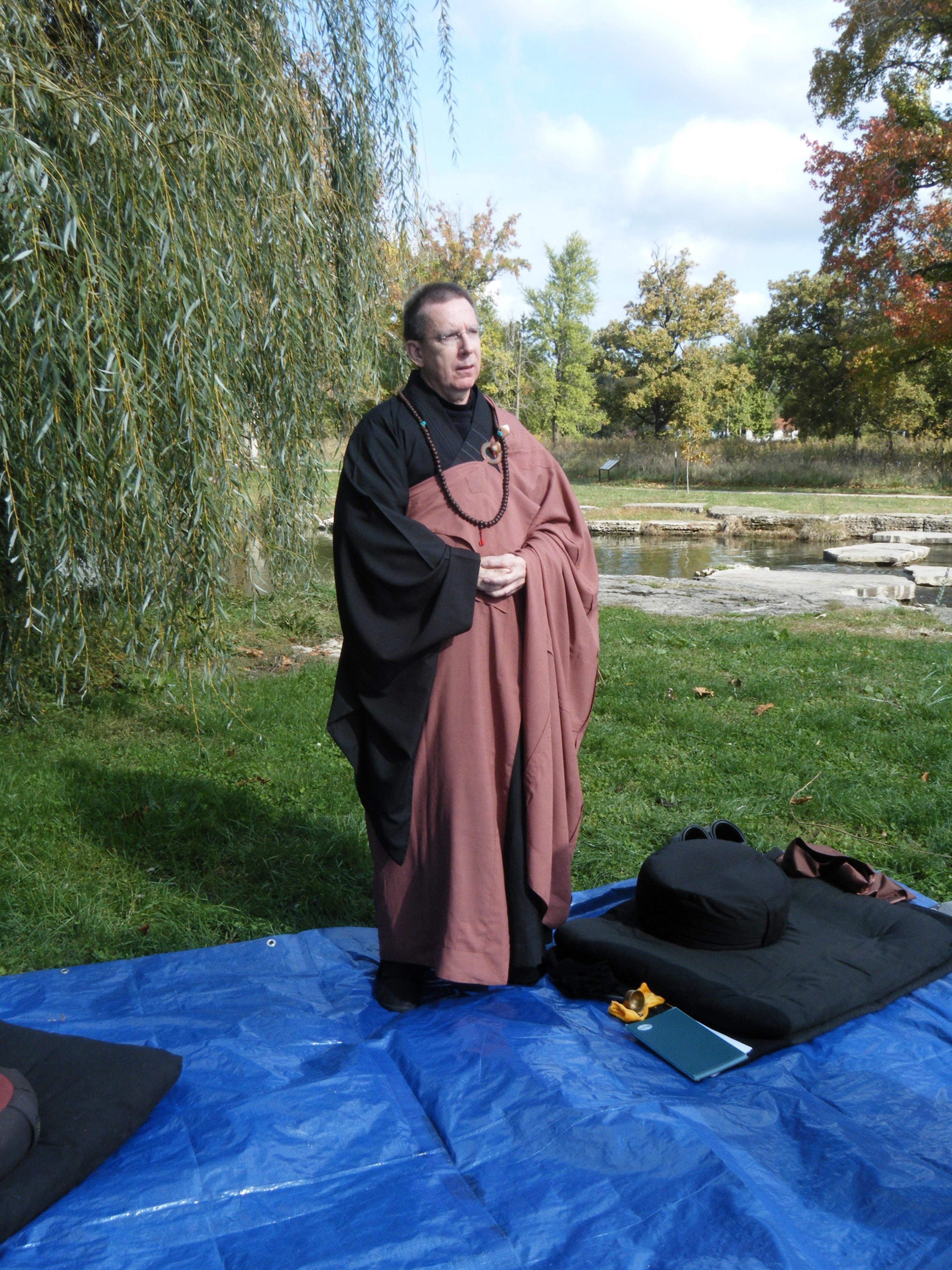[This Dharma talk was given during the OEB’s 2022 Spring Retreat]
Current events as seen through the lens of the Four Nobel Truths
By Rev. David Astor Sensei (Shen-Xi)
As I prepared to consider this topic for this retreat, what I thought would be my typical approach turned into lines of thought that highlight the various dimensions that the Four Nobel Truths can reflect that can make it difficult to narrow down what one would expect a dharma teacher to speak on considering the complexity of todays events. If it could only be as easy as a single event. Todays global crises as it pertains to the war and human suffering in Ukraine is bad enough, but here at home we are facing a breakdown in our ability to govern effectively, in our ability to find middle ground in order to create critical legislation to deal with national interests for the common good as well as witnessing a continued march toward the unrealistic politicalization of the High Court. In addition, we can not overestimate the restructuring of how we engage the media and how the various social networks influence the changing landscape of how we process current events in the news. The effects of these situations may, and most likely will, have a lasting effect on world events for decades considering that no culture is an autonomous one any longer. Most likely longer then I have left on this planet. This is not how I envisioned I would be engaged during the remaining time I have left. Another example of when the ideal meets the real.
Yet, the lessons that emerge from the Four Nobel Truths when we use them to seek a path forward for ourselves based on our various life interests and healthy expectations can give us a perspective on how and where to focus our Buddhist practice. The lessons are not hard, but putting them into useful practice takes dedication and skillful means. Obviously.
Three words come easily to mind -suffering, anger and feelings of despair – as we process these events. Our feelings are normal and to be expected by anyone with a working moral compass. Absence of these feelings, however, is another aspect of the nature of failing to realize the significance of isolating ourselves from real world situational events. Todays news is a target rich environment it seems. It is easy to get stuck in the first two truths without a way to return to a practice supporting a mind focused on happiness, health and harmony. It’s not easy to turn off and then turn back on without a period of contemplation. Feeling lost and frustrated at times is what makes us human after all.
It’s important to understand that feelings of anger and despair that are not easily put aside creating moments of limited feelings of unsatisfactoriness do not automatically need to be elevated to the Second Truth. The First Truth is about the realities inherent in the normal course of “living human”. It is when these moments of unsatisfactoriness continue into cycling patterns of distorted perception and our response to it that results in suffering and no lasting happiness is where the Second Truth is manifested. It is important not to misinterpret the First Truth as a statement which denigrates the body/mind. It does not state that the body or the world around us in themselves are unsatisfactory, but that our experiences is characterized in that way through our own developed personal preferences, attachments, cravings, and unwholesome behaviors. We must recognize that the world is always in the process of change. Our practice is to find a path that recognizes the need to process change in healthy ways and not let current events drag us into the Second Truth without a way out.
When we speak about the language of suffering and unsatisfactoriness we often use words like uncontrolled desire, greed, and craving. What is more important I think to also recognize is the critical role human emotions play when we feel angry or moments of despair. We only need to bring to mind how our meditation model describes how we humans come to know something, recognize it’s relative importance to us, and create a response that moves us from thought to action as well as the energy our body/mind chooses in order to act. But before all that happens we are often stuck in our thought processes without a clear idea on how to feel.
Emotions claim our attention in two ways. We experience them, sometimes in a manner which overwhelms us, or we analyze them by defining and classifying them in human and/or cultural expectations. We seldom do both at once, for analysis requires emotional detachment, and feelings of frustration and momentary anger does not permit study or reflection. Emotions arise and we relate to them before we have the time to assimilate and act on them. This is why the Fourth Truth and the Eightfold Path within it’s framework, as well as our practice focusing on human flourishing, is so important. Though some degree of body/mind disturbance would seem to be an essential ingredient in all our emotional experiences, the intensity and extent of the physiological reverberation, or body/mind commotion, is not the same or equal in all the levels of emotions. This is where the results of our emotions, thoughts and actions either stay in the First Truth or are elevated to suffering as they become a Second Truth reality. As teachers we should remain aware that this fact is sometimes used to draw the line between what are true healthy emotional responses to events should be, and how our uncontrolled conscience state of body/mind reactions beyond the ordinary can lead to disabling life situations.
Even though human emotions may have instinctive origins, or a psycho-emotional automatic response (a gut reaction) we should not forget they are also subject to voluntary control so we are able to form or change our response to them determined on unfolding events. If this were not true our moral and ethical control center loses it’s relevance in a civilized society and the foundation of our Buddhist practice. Emotions like anger and despair are neither knowledge nor action but something intermediate between conflicting dual realities. Emotions that arise to passionate feelings are usually aroused by situations perceived, imagined, or remembered, and once aroused they in turn result in impulses to act in certain learned ways based on the filters we use to recognize them, or are retrieved from our stored “experience memory” bank. It is partly a result of what is known and what is done, and partly the cause of how things seem and how we have learned to behave toward them.
Our mindful meditation practice helps us put things in healthy perspective especially during times like we are currently experiencing. Our practice focus is critical especially now. We must learn to balance the conflicts in our lives. We must understand it is normal to be emotional and feel angry and anxious over the reality of these current events. But we must also take the time to return to the ideals our practice is based on.
We sit to activate the internal monitor.
We watch for triggers which are emotional drivers:
I want
I need
I hate
We work to find enablers based on our experiences:
How do I know how I am
Who I know I am
Be or return to be happy, healthy, and live in harmony
Stress is not an event, but is the view we take of events.
We study the self to know how we are in order to know how to effect positive and useful change.
We work to build insight.
Return to the basics in order to build insight. Put things in perspective.
Look at the common, uncommonly
When we are ready, the ordinary can become extra-ordinary
Discover the richness inside of us
Mine them
Engage them
Share them (show, don’t tell)
Rediscover our relationship with all things around us. Don’t forget the OTHER.
The puzzle of our lives is bigger then you may think. Work to discover new
pieces.
CONCLUSION:
When we consider the Four Noble Truths as it is reflected within the greater reality of Dependent Origination we are describing the world as it is NOW so we can develop an intelligent and successful strategy to neutralized its difficult and painful expressions as best we can. It is a description of the way the human world happens to be in this lifetime, on this planet, under the present circumstances. Describing the Universe today is not to also describe how the Universe might be in the future, or in another universe for that matter. When applying the pragmatic teachings of Buddhist thought and values in a socially engaging practice, with the intent to enable individuals to realize a free, useful and productive life, it is then possible to create a world free from unnecessary suffering in real terms. This will be a slow and challenging process only achieved over unknown time dimensions. But it starts by each of us renewing our commitment when we stepped on the path and found our way out of the woods and into clear awareness, then helping others on this life journey we all share together. And that can be achieved in this lifetime. Even when feelings of anger, frustration and despair are the motivators for positive actions embracing our emotions. Remember our emotions are also effected by the laws of mutual causality. Giving them a new meaning can give our practice the energy to find a new path forward. Even if it means we learn to adapt to necessary compromise and find how we can still hold the Three Pure Precepts above the fray.
🙏🏼


















































































